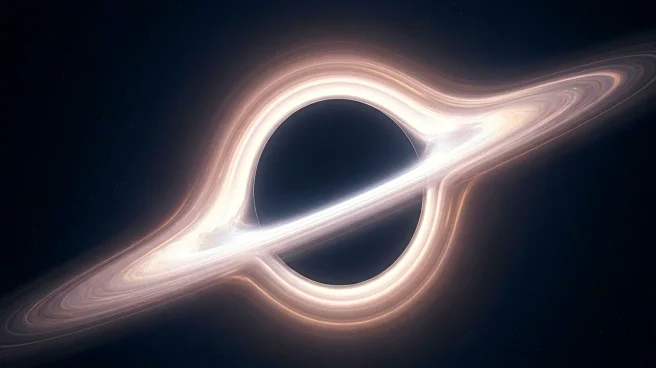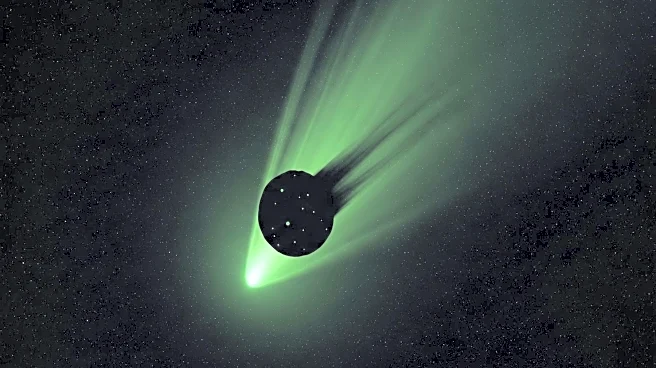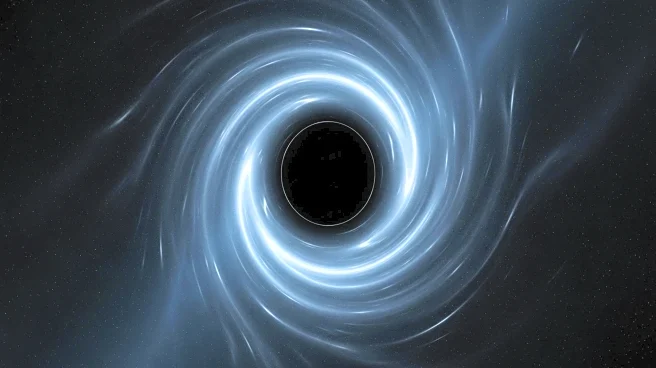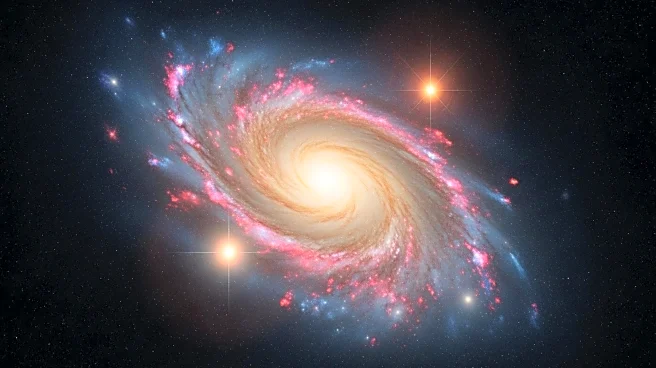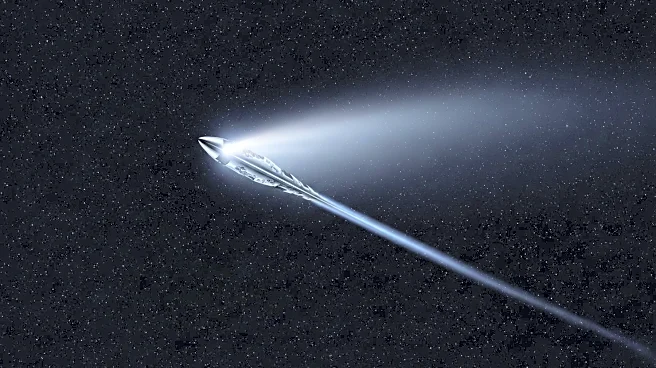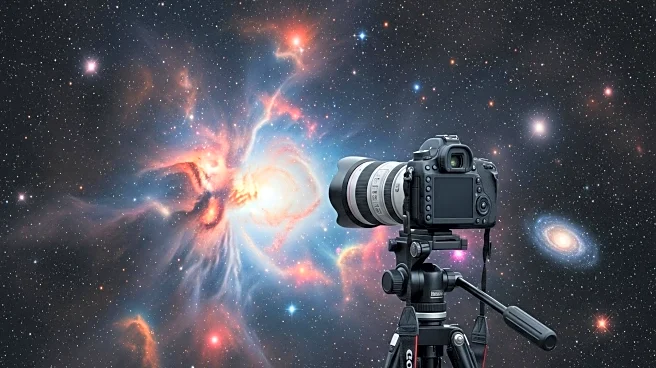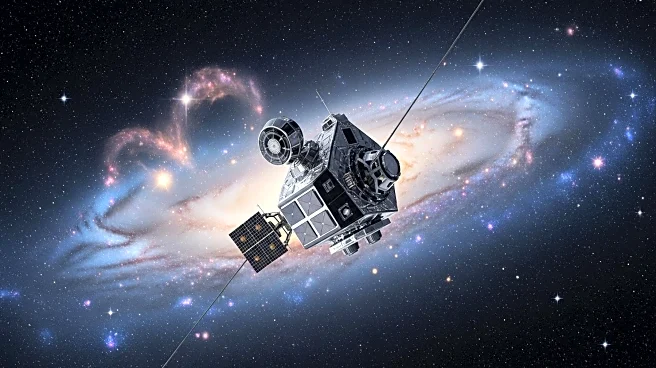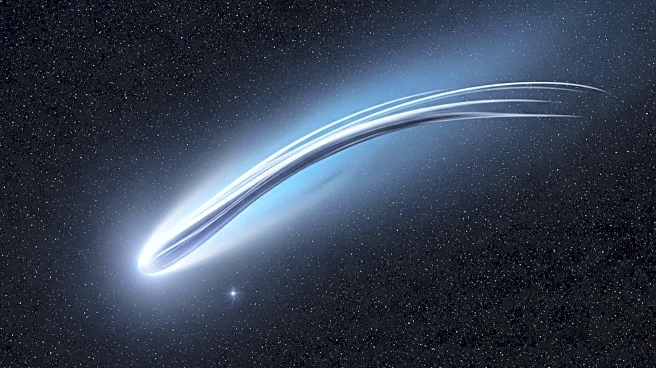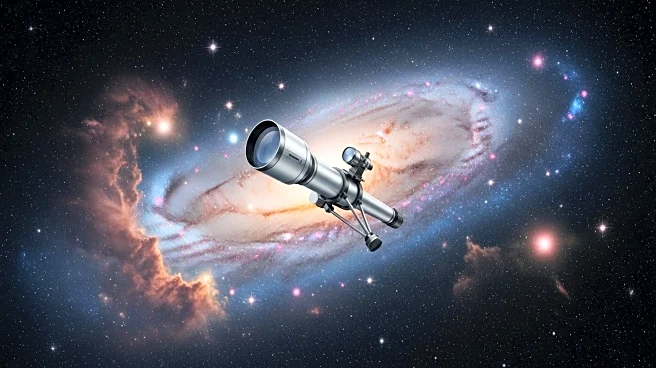What's Happening?
Astronomers have observed unexpected changes in the polarization of light near the event horizon of the supermassive black hole at the center of the M87 galaxy, located 55 million light-years from Earth. The Event Horizon Telescope (EHT) collaboration, which includes a global network of radio telescopes, has been studying this black hole since 2017. The findings, published in Astronomy & Astrophysics, reveal that the polarization pattern flipped between 2017 and 2021, suggesting a complex magnetic structure near the event horizon. This discovery challenges existing models and indicates dynamic changes in the magnetized plasma surrounding the black hole.
Why It's Important?
The discovery of changing polarization patterns near the event horizon of M87* provides new insights into the behavior of magnetic fields in extreme environments. Understanding these dynamics is crucial for developing accurate models of black hole physics, which have implications for our broader understanding of the universe. The findings also demonstrate the capabilities of the EHT as a scientific observatory, advancing our knowledge of cosmic phenomena and potentially influencing future research in astrophysics.
What's Next?
The EHT collaboration plans to continue analyzing the new data collected from the enhanced network of telescopes, which now includes additional instruments added in 2021. This ongoing research aims to further unravel the complexities of black hole behavior and refine theoretical models. The scientific community anticipates that these efforts will lead to more breakthroughs in understanding the fundamental nature of black holes and their role in the cosmos.

